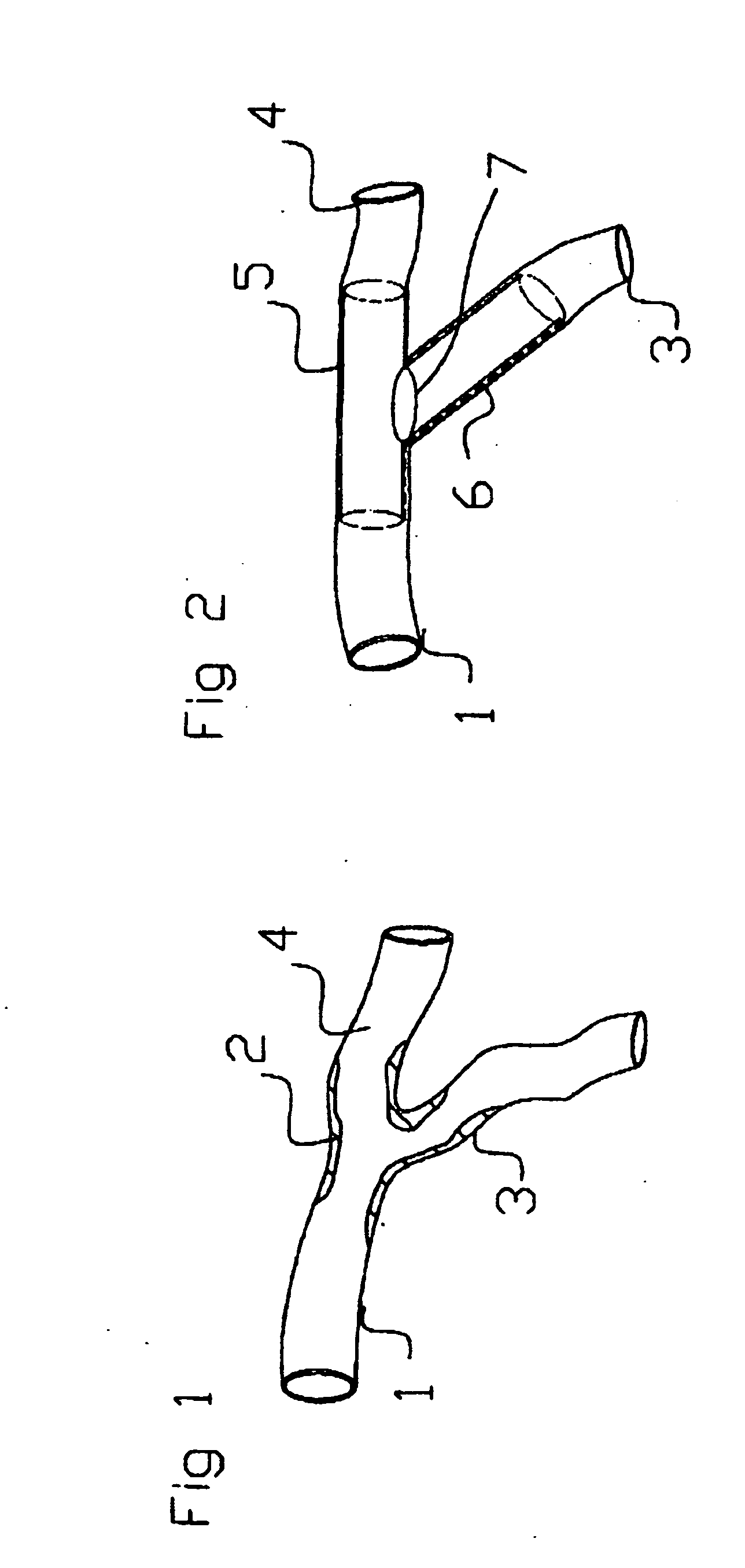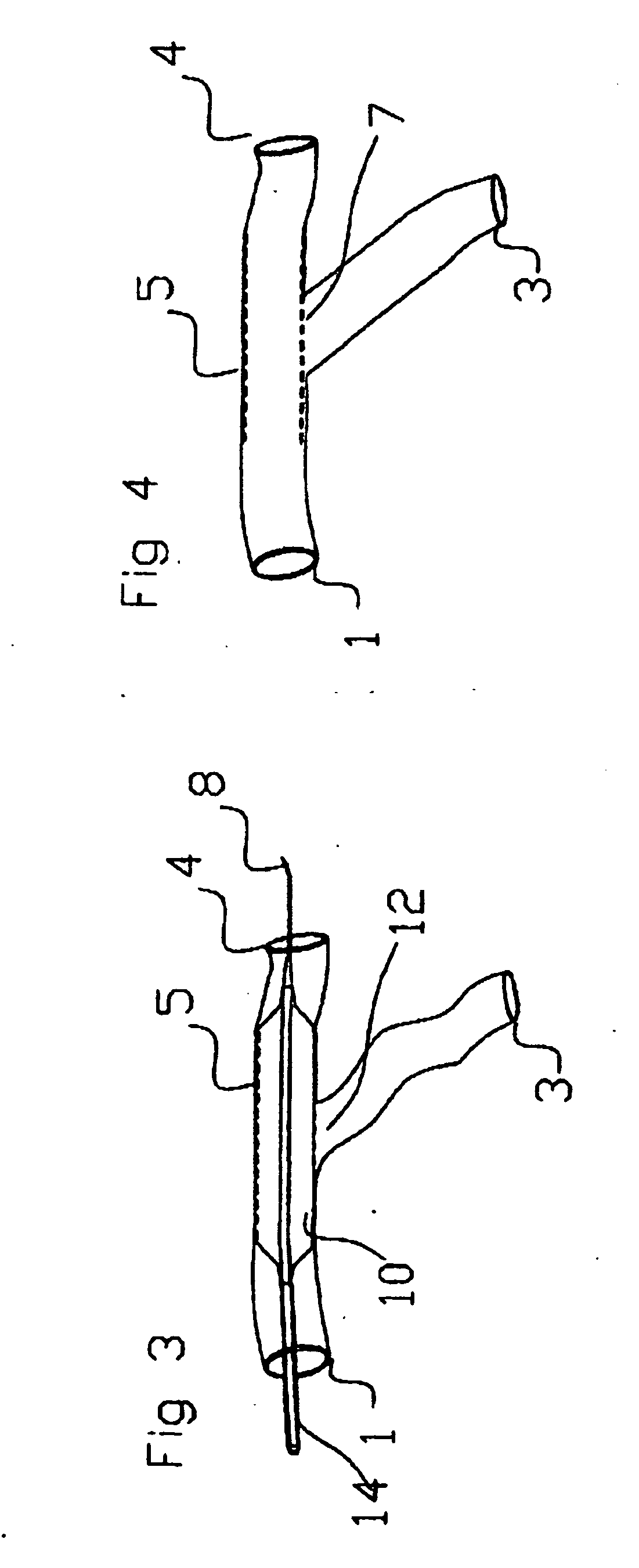Catheter device for delivery of stents to bifurcated arteries
a bifurcated artery and catheter technology, applied in balloon catheters, medical science, surgery, etc., can solve the problems of considerable additional time, difficulty or almost impossible for operators to thread guide wires, and considerably more complex procedures
- Summary
- Abstract
- Description
- Claims
- Application Information
AI Technical Summary
Problems solved by technology
Method used
Image
Examples
Embodiment Construction
[0039]The object of this invention is to develop a simple and effective device for deploying stents in bifurcated arteries. The invention described herein is a device that comprises two or more angioplasty balloons mounted distally in tandem fashion on a catheter device shaft having facilities to place two or more guide wires. One guide wire is placed in a straight through lumen and a second guide wire is placed either in the same through lumen or a separate lumen, exiting in either case via an opening in the shaft between the two balloons.
[0040]In FIG. 1 a bifurcated artery comprising a main branch 1 and a side branch 3, with a continuation 4 of the main branch 1 extending distally of the side branch 3. The bifurcated artery is seen to be atherosclerotic, having plaque 2 buildup therein.
[0041]In FIG. 2, ideal desired placement of stents, 5 in the main branch 1 and 4, and 6 in the side branch 3, is visualized, with an opening 7 formed in stent 5, allowing for unobstructed flow into ...
PUM
 Login to View More
Login to View More Abstract
Description
Claims
Application Information
 Login to View More
Login to View More - R&D
- Intellectual Property
- Life Sciences
- Materials
- Tech Scout
- Unparalleled Data Quality
- Higher Quality Content
- 60% Fewer Hallucinations
Browse by: Latest US Patents, China's latest patents, Technical Efficacy Thesaurus, Application Domain, Technology Topic, Popular Technical Reports.
© 2025 PatSnap. All rights reserved.Legal|Privacy policy|Modern Slavery Act Transparency Statement|Sitemap|About US| Contact US: help@patsnap.com



